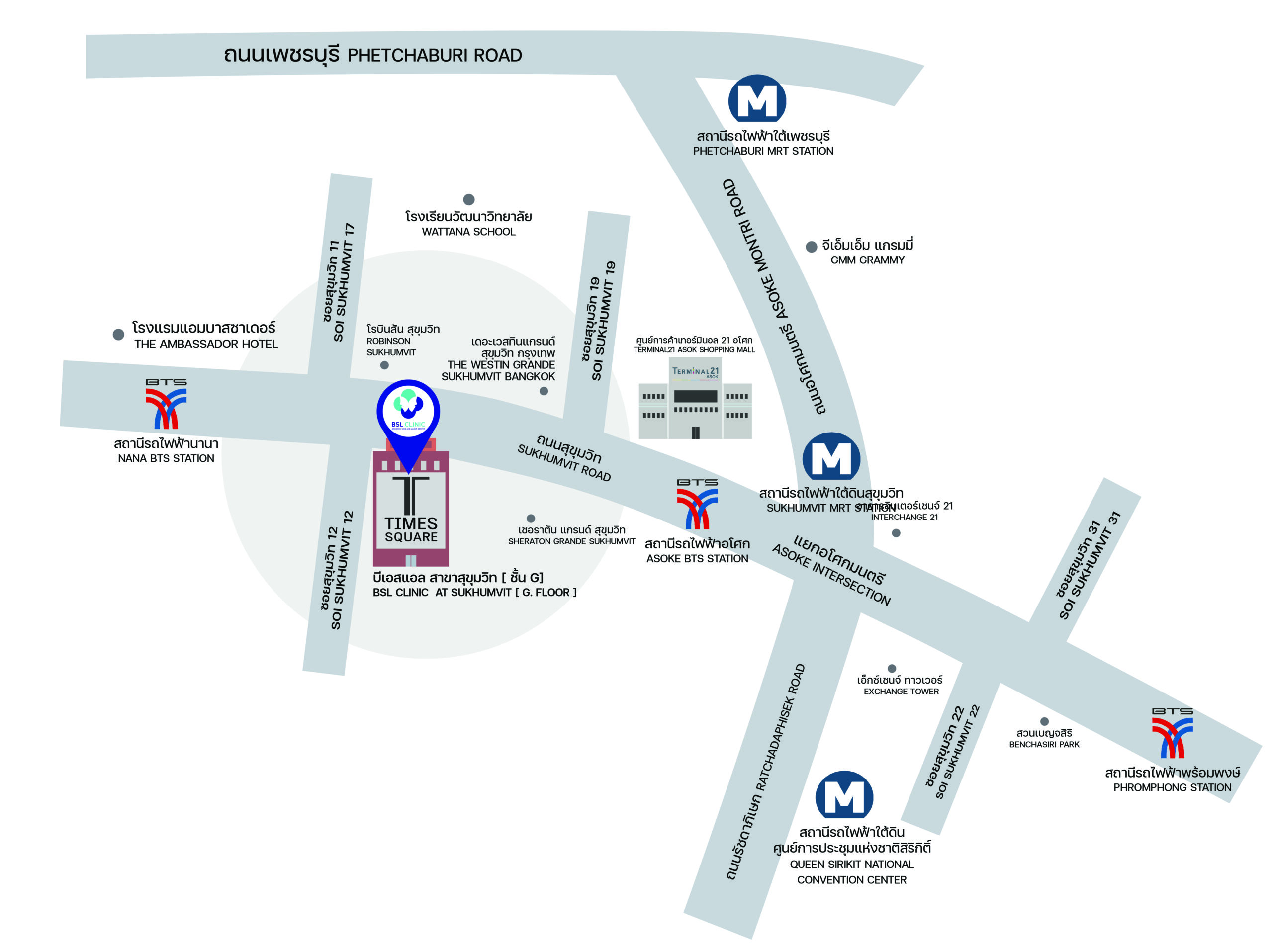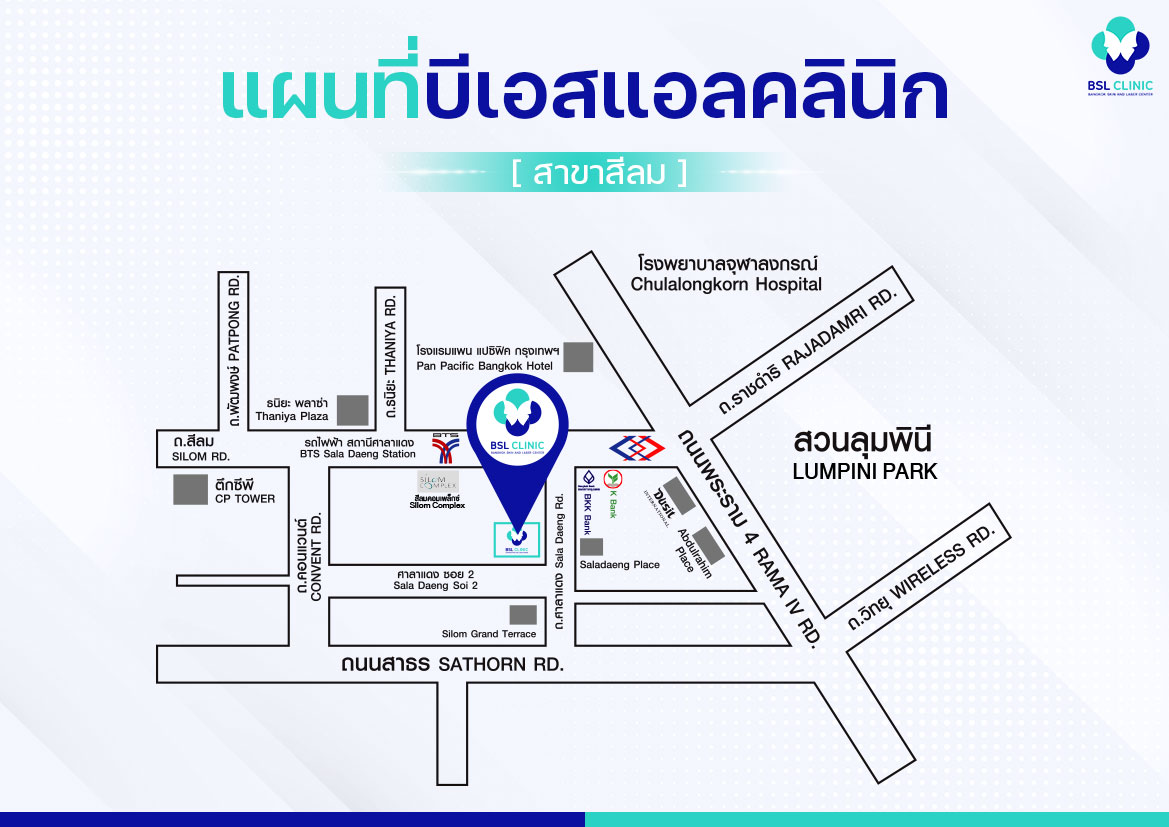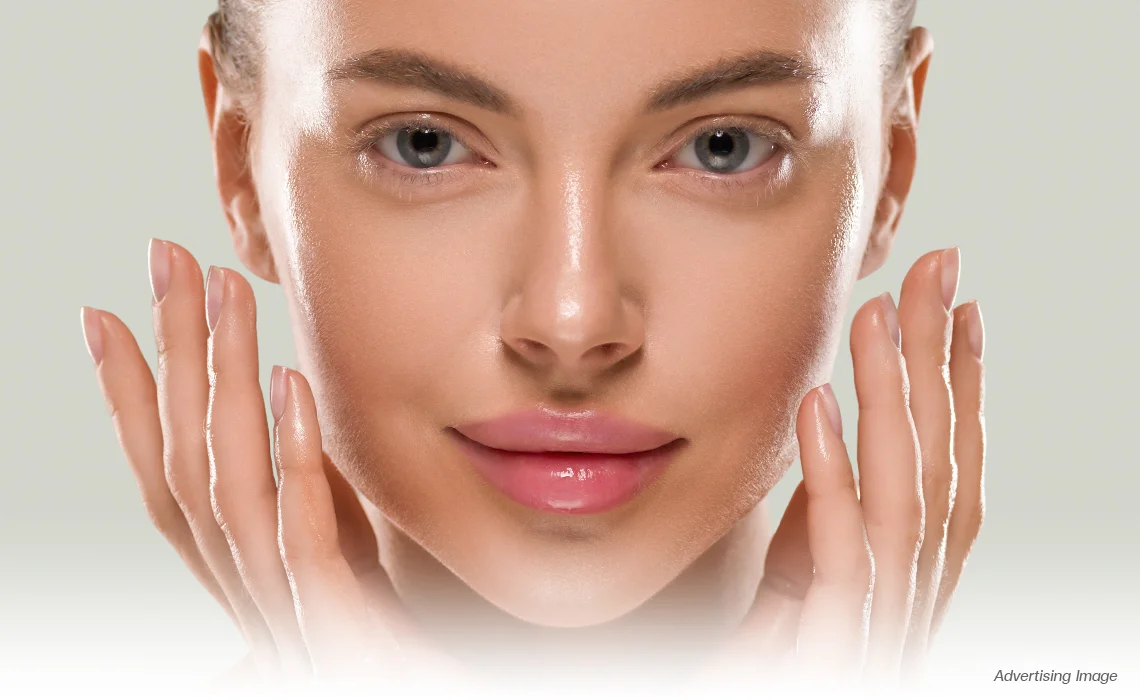
There are different types of sensitive skin concerns, including eczema, seborrheic dermatitis, and facial redness. These conditions may be influenced by factors such as environmental pollution, dust, chemical exposure, UV radiation, living conditions, diet, and lifestyle choices. Individuals with sensitive skin may experience symptoms such as rashes, flushing, redness, itchiness, or irritation.
Seborrheic dermatitis is often associated with skin flakiness, redness, and irritation. It commonly appears on areas such as the cheekbones, between the eyebrows, the sides of the nose, along the hairline, and around the ears.
Characteristics of Patients with Sensitive Skin

Skin itchiness may cause discomfort and irritation.
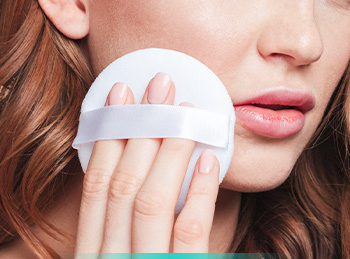
Certain cosmetic products may trigger allergic reactions.

Facial redness and dryness can occur.

Sweating and sun exposure may lead to itchiness, rashes, or redness.

Itchy and red rashes often develop on sun-exposed skin.

Sweating may cause facial irritation.
*Individual results may vary depending on individual patient
Level of Sensitive Skin
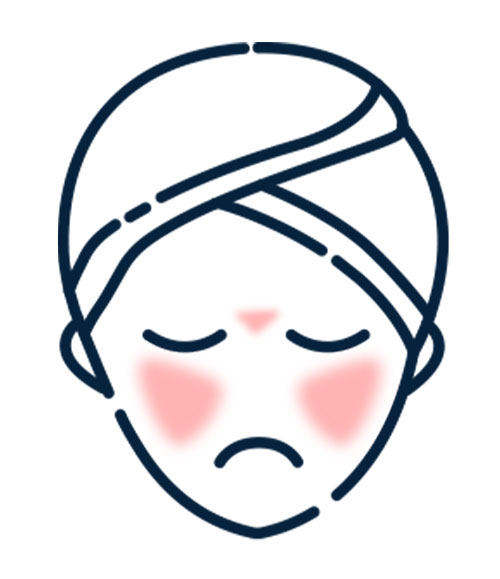
LOW / MILD
- Thin skin, mildly red, and slightly flaky
- Red rashes forming a butterfly shape on both cheeks
- Rashes appearing on the forehead
*Individual results may vary depending on individual patient
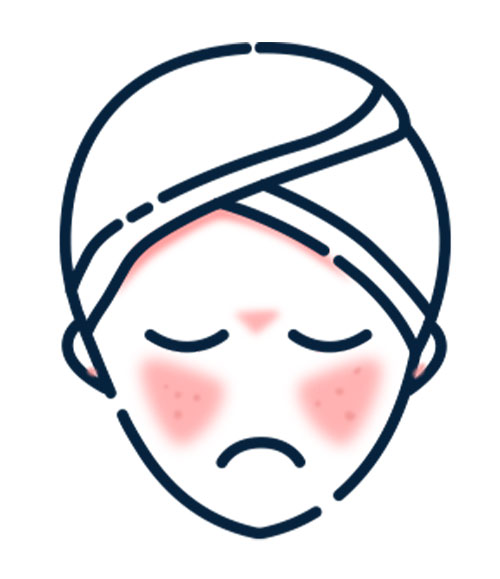
MEDIUM / MODERATE
- Red rashes on both sides of the cheeks and forehead
- Rashes along the hairline and behind the ears
- Skin irritation and redness
*Individual results may vary depending on individual patient
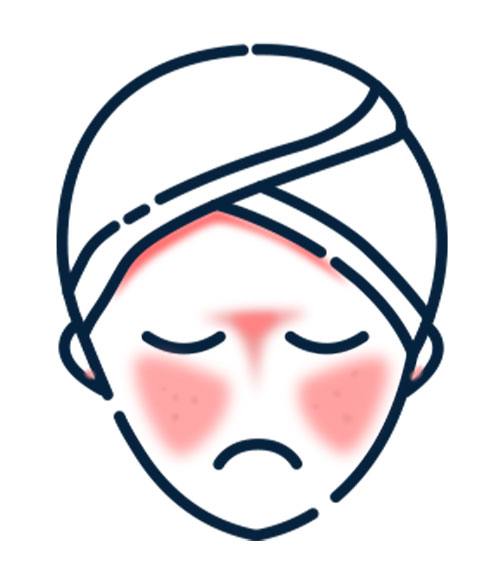
HIGH / SEVERE
- Red rashes on the forehead, hairline, and behind both ears
- Red rashes on the scalp
- Red rashes on both sides of the cheekbones
- Red rashes along the jawline, upper neck, chest, and back
- Red heat rashes, itchiness, and stinging pain
- Scabs and flaky skin
*Individual results may vary depending on individual patient
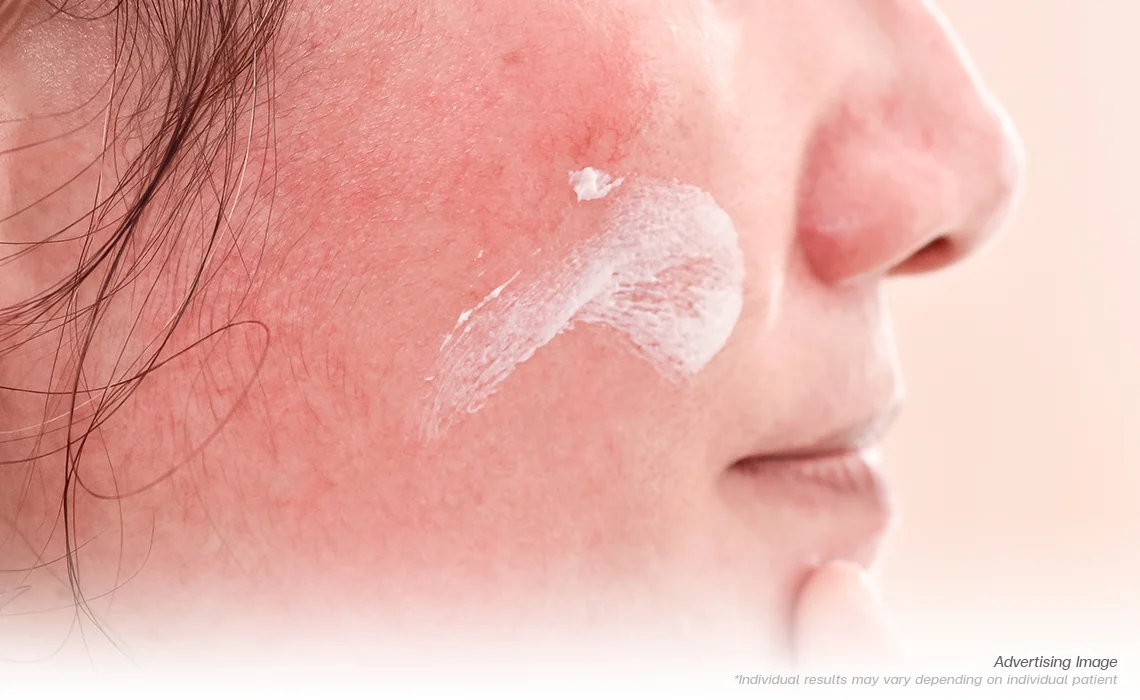
Negative Effects Associated with Long-term Steroid Use
Long-term or frequent steroid use for sensitive skin and seborrheic dermatitis may be associated with the following effects:
3 Steps for Treating Sensitive Skin
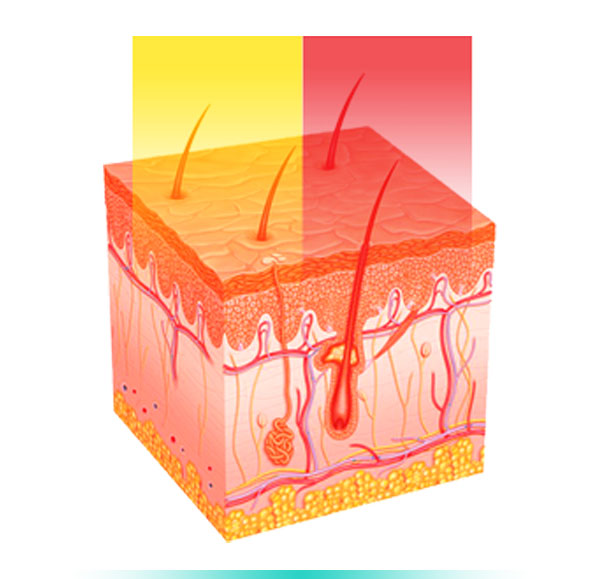
Step 1
Helps soothe facial redness, inflammation, and rashes.
*Individual results may vary depending on individual patient
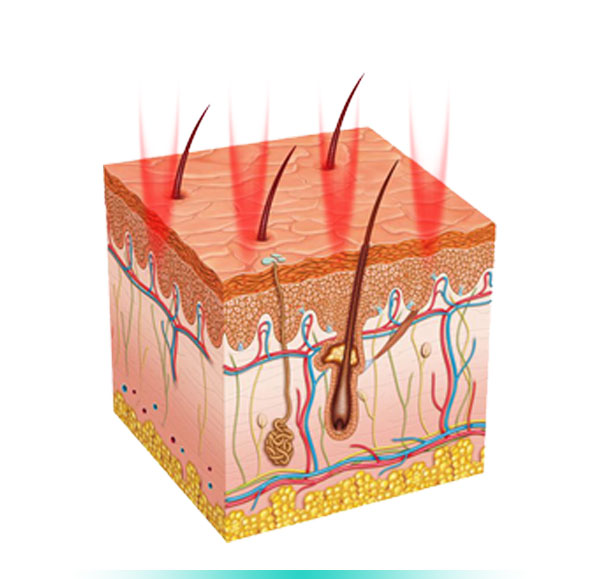
Step 2
Supports the skin’s natural repair process.
*Individual results may vary depending on individual patient
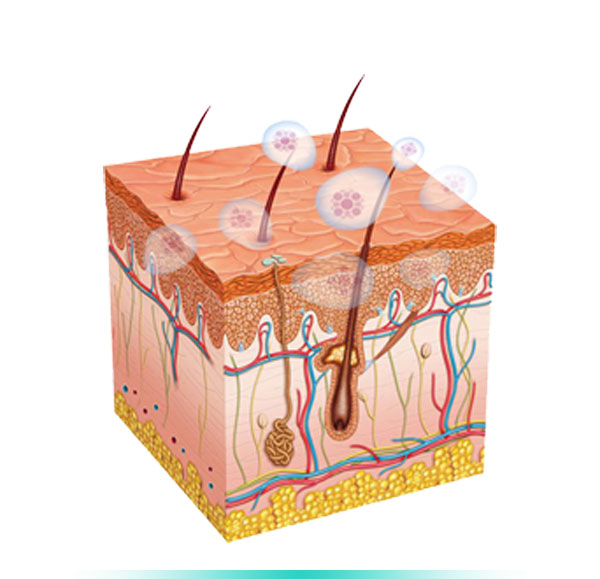
Step 3
Helps maintain skin integrity and overall skin appearance.
*Individual results may vary depending on individual patient
The following steps detail BSL Clinic’s treatment of sensitive skin:
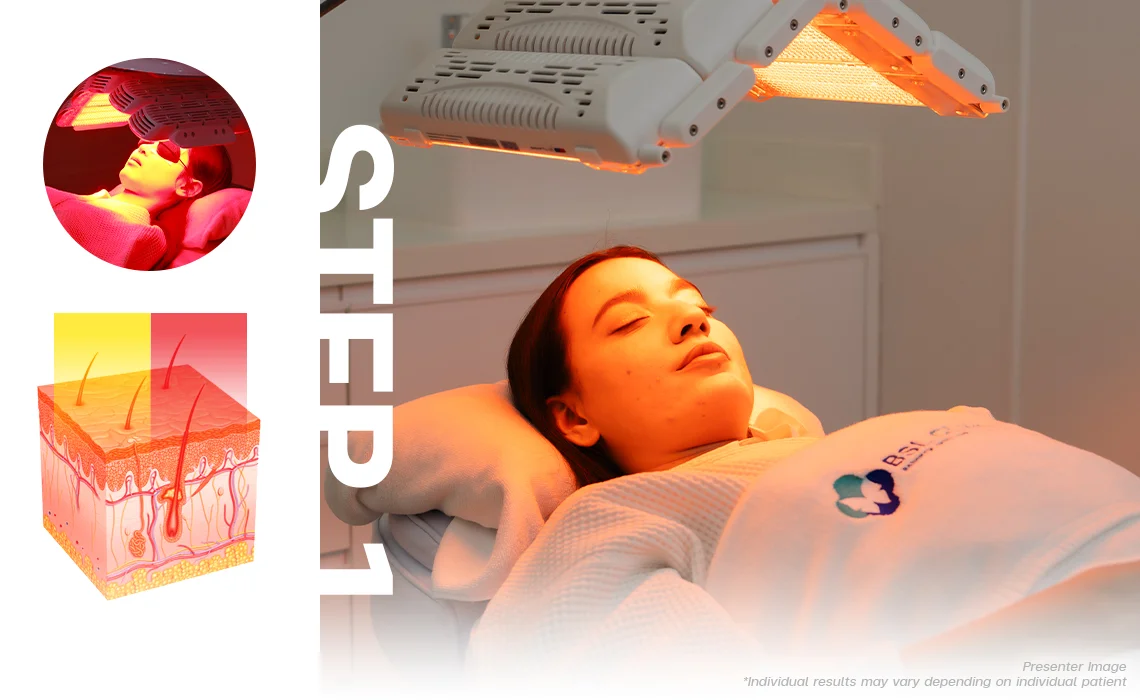
Step 1 – Helps soothe and reduce facial redness, inflammation, and rashes.
Light therapy is used in skin treatments to help address facial redness, inflammation, and irritation. This laser-based approach is designed to support the skin’s natural repair process. The treatment may also help improve skin texture. As the skin responds to the procedure, its overall appearance may gradually improve. Individual results can vary.
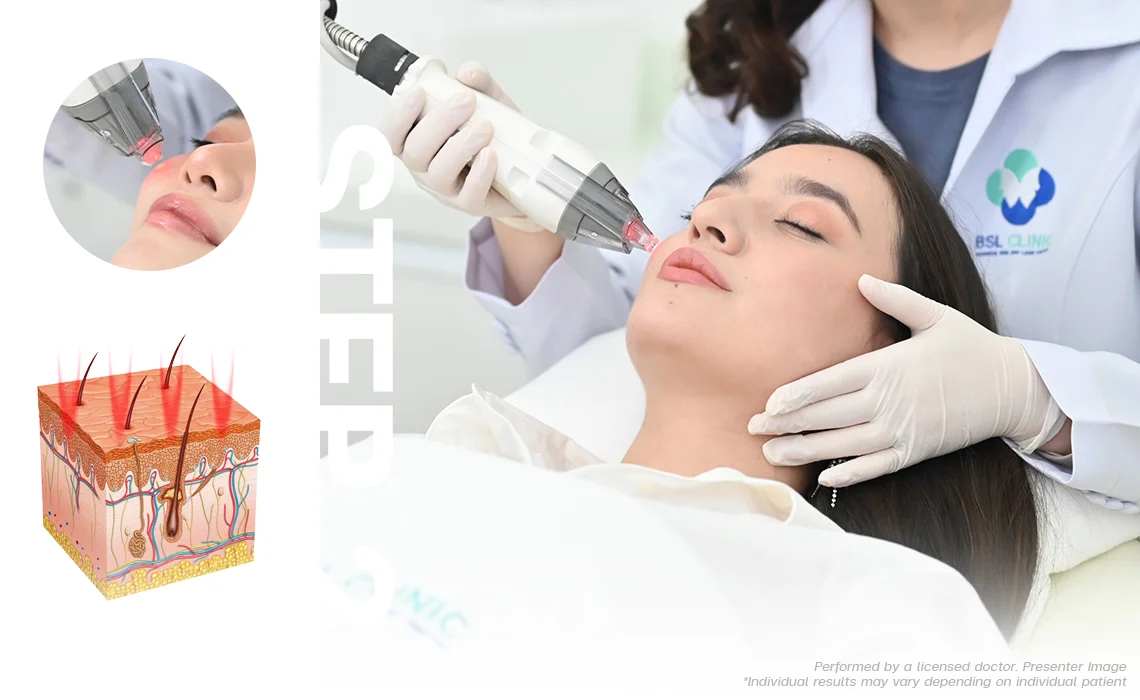
Step 2 – Supports the skin’s natural repair process.
A combination of laser technology, natural moisturizers, and ceramides is used to support the skin’s natural repair process. This approach helps maintain skin hydration and may contribute to improving skin resilience.
Laser treatment is applied to the skin in a controlled manner and is designed to support the skin’s natural repair process. The surrounding skin remains unaffected during the procedure, as the laser targets specific areas with precision.
Collagen production may begin within approximately one month, while structural skin improvements can take up to three months, varying among individuals.
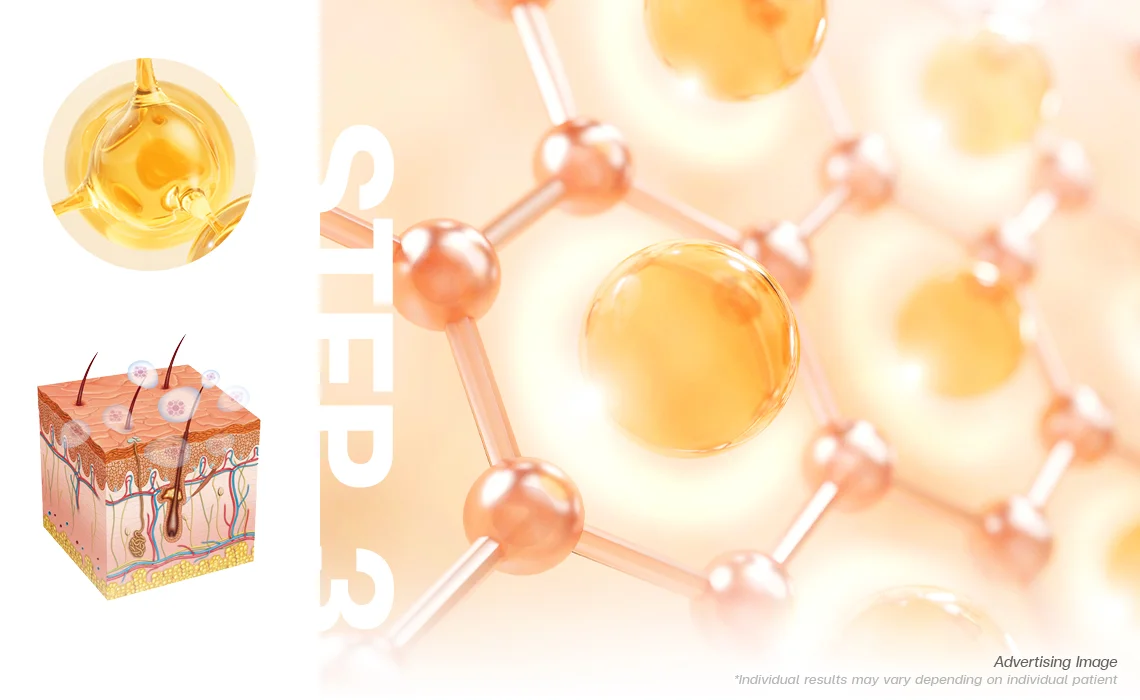
Step 3 – Helps maintain skin integrity and overall skin appearance.
Bioregenerative program helps support skin barrier function by aiding collagen production and may help improve skin hydration, supporting skin resilience¹. It may also help manage inflammation and assist in the skin’s natural repair process, which may help reduce the appearance of skin sensitivity and irritation². This treatment may support fibroblast activity, contributing to overall skin health over time³.

Before and 6 Months After The Treatment
*Individual results may vary depending on individual patient
Before and After Treatments of Seborrheic Dermatitis – This case involved four treatment sessions over a four-month period at BSL Clinic.
Follow-up After Two Years – The patient’s skin appears healthy, and no recurrence has been observed during the follow-up period. Individual results may vary, and continued skin care is recommended for long-term maintenance.
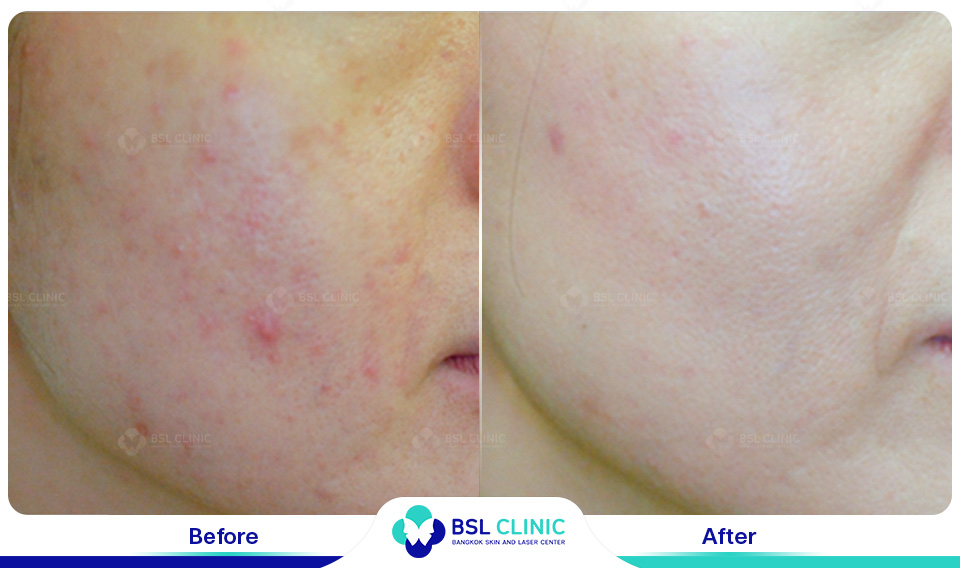
Before and 6 Months After The Treatment
*Individual results may vary depending on individual patient
Before and After Treatments – After treatment, the patient showed a noticeable reduction in redness, rashes, and skin sensitivity. The skin condition appeared improved and more balanced. Individual results may vary, and sun protection is recommended for maintaining healthy skin.

Before and 6 Months After The Treatment
*Individual results may vary depending on individual patient
Before and After Treatments – Skin sensitivity showed improvement following treatment. Within a three-month period, the skin condition appeared healthier, based on individual response. Results may vary.
Before and After Treatments for Sensitive Skin
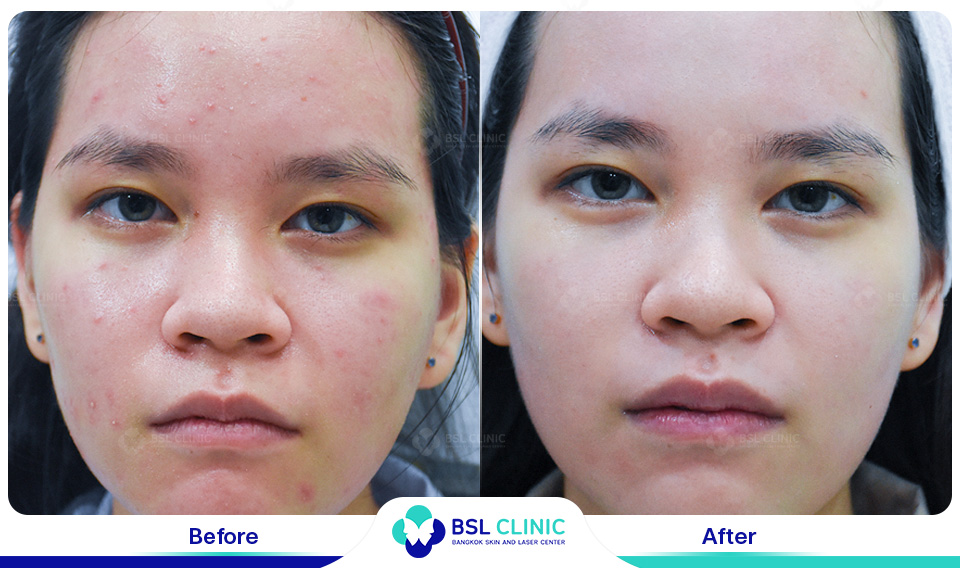
Before and 6 Months After The Treatment
*Individual results may vary depending on individual patient
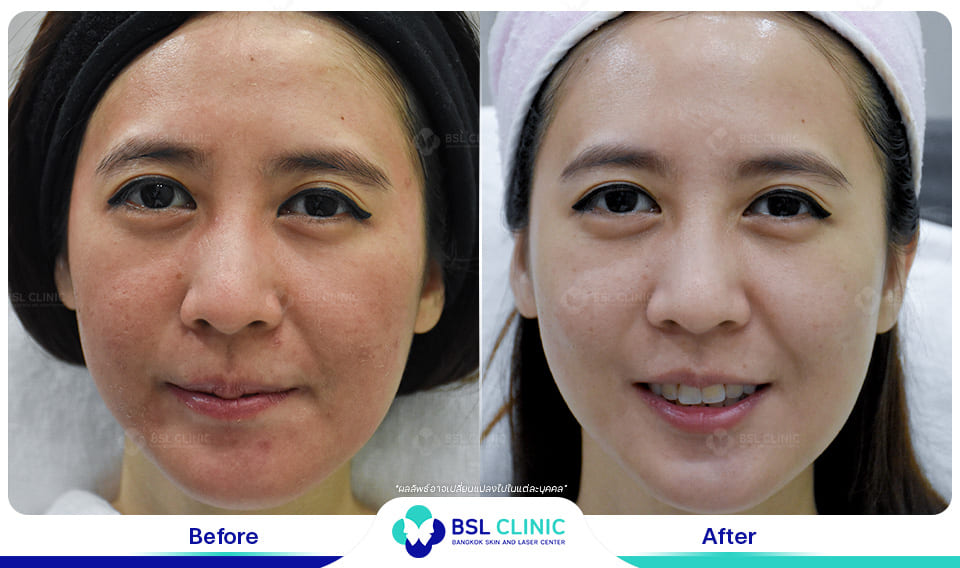
Before and 6 Months After The Treatment
*Individual results may vary depending on individual patient
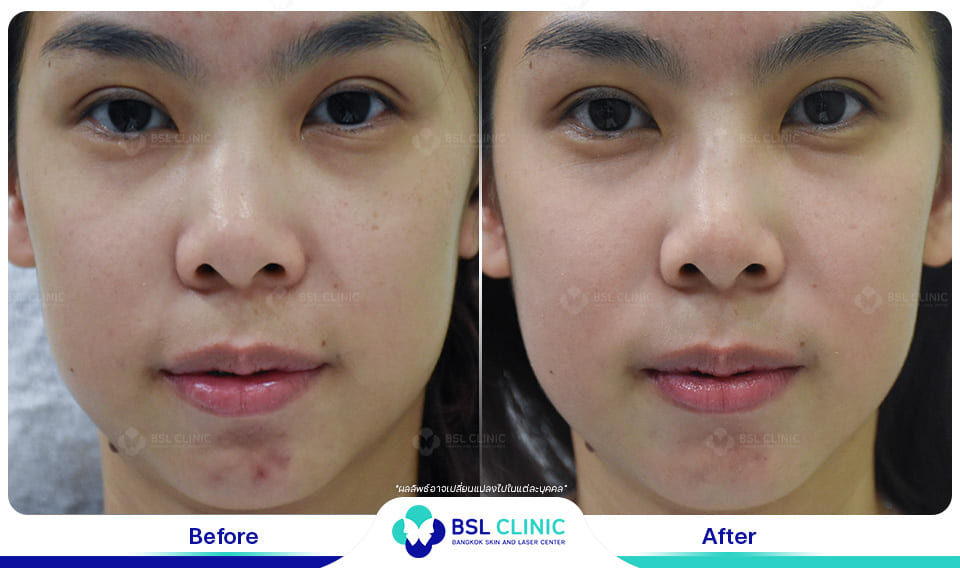
Before and 6 Months After The Treatment
*Individual results may vary depending on individual patient
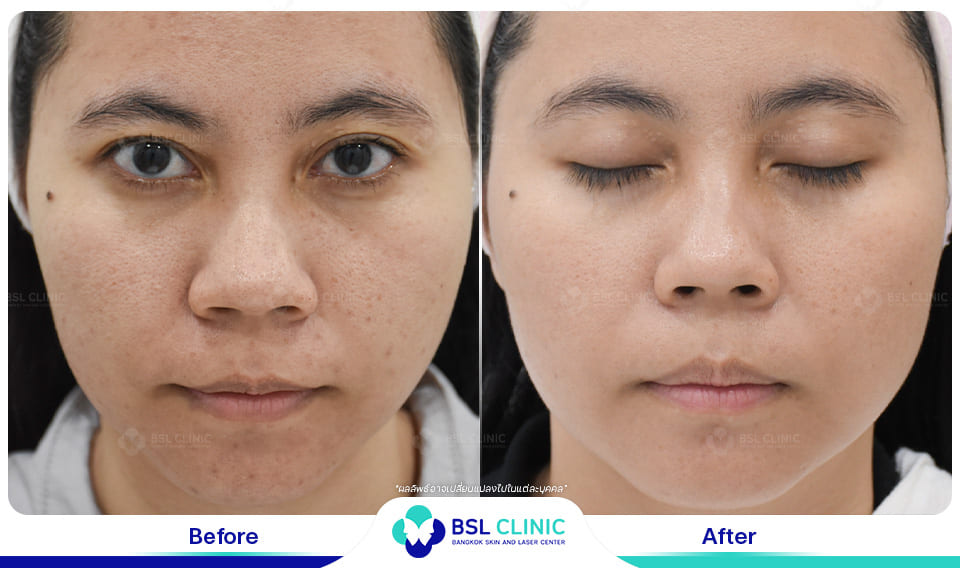
Before and 6 Months After The Treatment
*Individual results may vary depending on individual patient
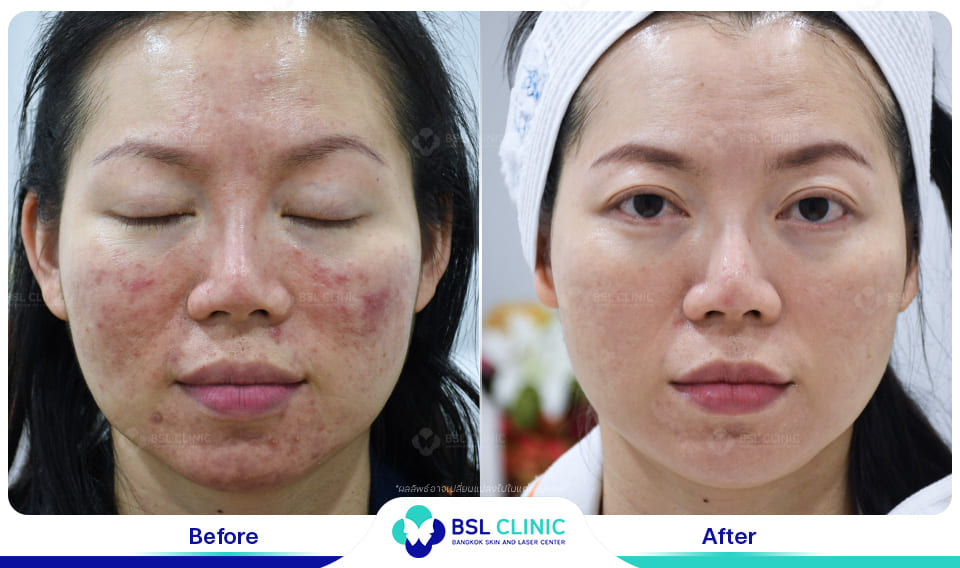
Before and 6 Months After The Treatment
*Individual results may vary depending on individual patient
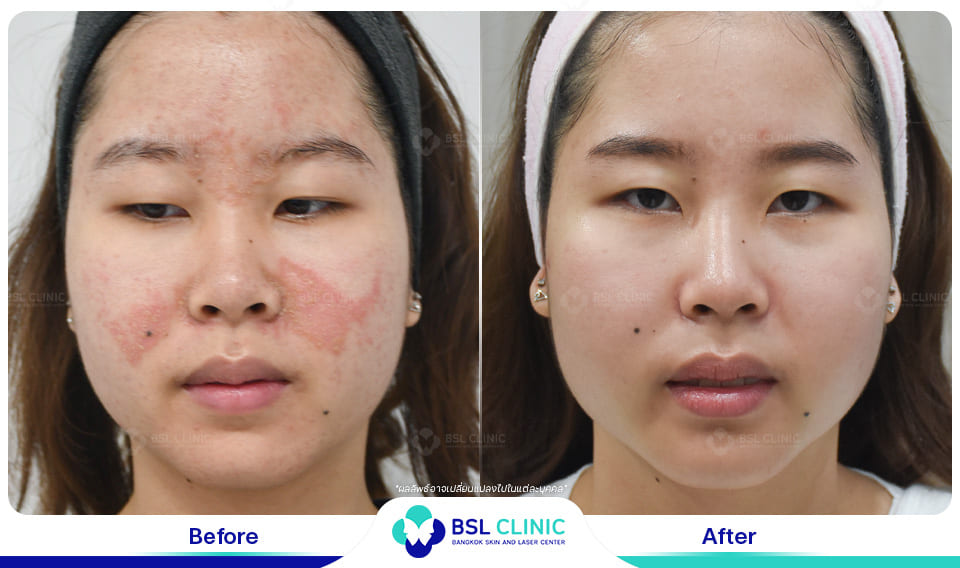
Before and 6 Months After The Treatment
*Individual results may vary depending on individual patient
References
- Phoebe LK, Lee KW, Chan LKW, et al. Use of bioregenerative therapy for skin rejuvenation. Skin Res Technol. 2024;30.
- Vladulescu D, Scurtu LG, Simionescu A, et al. Bioregenerative therapy in dermatology: Cellular and molecular mechanisms of action. Biomedicines. 2023.
- Emer J. Bioregenerative Therapy: Current applications in dermatology. Skin Ther Lett. 2019;24(5):1-6.

